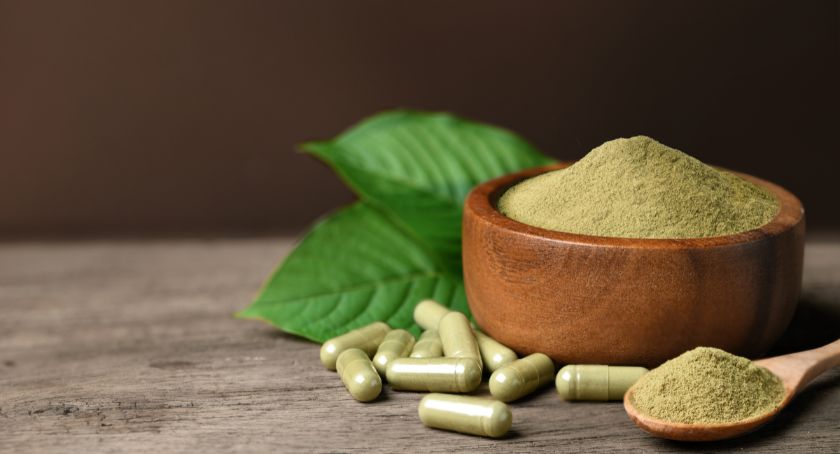Features
Ingredient Authentication in the Lab
Development of standard method performance requirements is critically important work in the dietary supplement industry.
Manufacturers of the joint-health supplement chondroitin sulfate received a boost last August when AOAC International approved a method for testing the chondroitin content of raw materials and finished products.
Chondroitin is one of the world’s most popular dietary supplements, with about $1 billion in annual sales. It’s also a supplement with a strong, loyal following. “Chondroitin is an ingredient I’ve always believed works,” said Jana Hildreth, director of technology and scientific affairs for Synutra Pure, a leading chondroitin supplier.
And for Ms. Hildreth, it’s not just professional interest speaking; she has cousins in Europe who’ve been taking it for years. “My cousins are rock climbers and get a lot of wear and tear on their joints,” she said. “[One] was taking it for his knee and it was helping. I have joint issues and was looking for a good product.”
But chondroitin is expensive, wholesaling for about $70 per kilo, and that opens the door to fraud. Not only have unscrupulous suppliers diluted it with seaweed extracts such as carrageenan and alginates, but there’s been at least one case, Ms. Hildreth said, where it was cut with sodium hexametaphosphate, a chemical used in water softeners and detergents. That’s not just an economic issue, she said, but a potential public health concern.
Adding to the problem was the fact that the conventional method of measuring chondroitin’s purity was 16 years old and easily fooled by crafty crooks. That’s because the method, chosen in 1999 by The Institute for Nutraceutical Advancement, measured chondroitin content by titrating samples with cetylpyridinium chloride (CPC), a chemical that turns solutions cloudy when it reacts with chondroitin. It made for a quick and easy test, but it reacts the same way with some other chemicals and proved easily fooled by cheap adulterants. Ms. Hildreth said there were estimates that as much as 25% of the supply coming into the U.S. was adulterated.
Manufacturers and consumers weren’t the only ones for whom this was a problem: it also affected researchers trying to document chondroitin’s benefits. “The clinical tests were never run on such low-purity material,” Ms. Hildreth said. Joseph Betz, PhD, director of the Dietary Supplements Analytical Methods and Reference Materials Program (AMRM) at the National Institutes of Health’s Office of Dietary Supplements (ODS), noted that if successive studies can’t get the same quality of material, it’s hard to compare results among them.
Developing Gold Standards
This is exactly the type of problem AOAC International was designed to address.
AOAC is a 131-year-old organization originally called the Association of Official Agricultural Chemists. It was created in 1884 to help the U.S. Department of Agriculture determine the nitrogen content of fertilizers—a problem that in the 1880s was every bit as pressing to farmers as determining the purity of ingredients like chondroitin sulfate is to today’s supplement industry. “If you’re going to sell fertilizer based on nitrogen content and you have different labs giving different numbers, it makes it hard to do business,” said Steven Dentali, PhD, a pharmacognosist and research fellow, Botanical Development, at Herbalife International.
When AOAC expanded beyond agriculture, it changed its name to the Association of Official Analytical Chemists, and then simplified that to AOAC International. But its basic mandate remained the same: use the best available science to determine reliable methods for measuring substances of interest in foods, beverages, supplements, infant formula, feeds, veterinary drugs and related products … and, if these methods are good enough, designate them as Official Methods of Analysis.
AOAC isn’t the only organization involved in methods evaluation, but it’s been doing it long enough that its listings have acquired considerable cachet. “These methods become the gold standard,” Ms. Hildreth said. In fact, according to Darryl Sullivan, director of scientific and regulatory affairs at Covance Laboratories, when it comes to monitoring dietary supplements, “the statutes say that if there is an AOAC official method, that’s what the Food and Drug Administration will use.”
“AOAC methods are [also] recognized by international regulatory bodies,” added Dr. Betz, noting that having an official method for a problem ingredient can provide both manufacturers and consumers with increased confidence in a product’s integrity. “A reliable method [can] help industry clean up the supply chain.”
AOAC’s process begins with committees filled with volunteer members from industry, academia and government. “Stakeholder panels and associated working groups identify method needs, set priorities and convene expert panels to evaluate candidate methods for their potential to become Official Methods of Analysis,” said Dr. Betz, whose office provides contract funding to aid this process.
Case Studies
Chondroitin is a good case in point. As far back as 2003, AOAC recognized there were problems with the cetylpyridinium chloride method and issued a call for new methods. Eight candidates were suggested, but the only one that worked well enough was developed by a team led by David Ji of Analytical Laboratories in Anaheim (with funding from ODS).
Rather than measuring chondroitin content indirectly by observing how it reacted with another chemical, this method measured it directly by using an enzyme called chondroitinase ACII to break it into smaller pieces that could then be individually measured using chromatography with UV detection. And, as the enzyme’s name indicates, it’s highly specific for chondroitin, keeping it from being fooled by common adulterants.
It worked brilliantly in several labs, including Mr. Ji’s, and study director Mark Roman’s at Tampa Bay Analytical Laboratories in Florida—well enough that the researchers published their result in AOAC’s journal (Ji, D., Roman, M., Zhou, J., & Hildreth, J., J. AOAC Int. 90, 659-669 (2007)). It worked for raw material, capsules, chewables, tablets, softgels and liquid supplements. In theory, it should even work on gummy bears if anyone wanted to make a chondroitin supplement in that form, Ms. Hildreth said.
It should have been exactly what the industry needed—“should” being the operative word. One problem was that chondroitinase was hard to find, as were reference materials for calibrating the test. Without the enzyme, the method was impossible; and without reference materials there was no way to make sure you were doing it correctly. Also, it was a little tricky. “You have to be pretty good at chromatography,” Ms. Hildreth said.
Another technical problem was that chondroitin is a molecule that absorbs water extremely easily. “If it’s not dried well enough, you get variable results,” Ms. Hildreth added. The bottom line was that when different chemists tried the method they sometimes got inconsistent results.
At the time, AOAC only designated methods as official if they passed an inter-laboratory validation study—exactly the type of study the chondroitinase-based method had failed. So, given the supply problems with chondroitinase, the method languished and manufacturers continued to use cetylpyridinium chloride.
In 2011, however, AOAC changed its procedures to allow an expedited form of approval for “First Action” official methods. Rather than requiring inter-laboratory validation studies, this process uses expert review panels to assess the available data and determine whether methods are scientifically sound and fit for their intended purposes. The difference may sound arcane, but it’s crucial in today’s world, where a previously unheard of material can produce an international crisis far more quickly than an old-style inter-laboratory validation study could ever be carried out.
A good example arose in March 2014 when New Zealand officials revealed that ecoterrorists had threatened to contaminate infant formula from New Zealand with a rodenticide known as compound 1080. A test was needed immediately, and AOAC was able to respond with alacrity.
The New Zealand government announced the crisis on March 10. Two days later, Daniel Schmitz, director of analytical and compliance research for the nutrition branch of Abbott Laboratories, was spearheading a group asking AOAC to start the process of designating one or more First Action official methods. Within days, eight methods had been submitted for review and an expert panel had picked three for official First Action status.
It was a strong display of what AOAC can do when the need arises. Admittedly, the organization was somewhat lucky in being able to act that rapidly, because the relevant experts had already been scheduled to attend a meeting that could be repurposed to address compound 1080. “From initial inquiry to the final step, method approval was done in a one-week time frame,” Mr. Schmitz said at the time.
“AOAC is able to react very, very quickly to unforeseen events like this,” added Erik Konings, PhD, global analytical method alignment coordinator at the Nestlé Research Center, Lausanne, Switzerland.
In the case of chondroitin, the need wasn’t that urgent, but AOAC’s process still functioned quickly. In September 2014, its Stakeholder Panel on Dietary Supplements decided to revisit chondroitin, announcing a list of criteria (called standard method performance requirements) that a chondroitin method needed to achieve. Four months later, AOAC put out a call for methods for review. Eight were submitted, but ultimately only one was found suitable: Mr. Ji’s chondroitinase method. Yes, other labs had trouble getting consistent results in 2007, but that didn’t mean there was anything wrong with the method itself: the problem, as Ms. Hildreth noted, was in getting the correct supplies and in training people to do it correctly.
A Modern Path to Action
AOAC’s new First Action process is based on the realization that however nice inter-laboratory validation studies are, they’re no longer necessary to prove a method works.
Once up a time, AOAC President Norma Hill said, analytical chemistry tended to involve “wet” lab methods that could be difficult to replicate … plus instruments might vary from one lab to another. But today procedures no longer use classic wet-lab methods, and instruments have become both more reliable and more standardized. That means many of the variables that once made the inter-laboratory validation studies necessary have disappeared. Today, Ms. Hill said, “the most common source of variation is human error”—something that does not require a full-fledged collaborative study to address. “I have seen data that indicates a properly conducted single-laboratory validation that employs more than one operator is a very good predictor of reproducibility,” she said.
What this means is that, suddenly, it was possible to put Mr. Ji’s method on the books. “It’s a major accomplishment,” said Dr. Dentali.
Not only is there now a method that won’t be fooled by common adulterants, but its status as an AOAC official method means that industry and regulators will now be using the same method. “There should be no disputes [over that],” Mr. Sullivan said.
ODS’s role in the process will also help spur the method’s widespread use. “Since part of our mission is education and outreach,” Dr. Betz said, “we will talk about this and other methods when we give presentations at scientific meetings and trade shows.”
That said, the process isn’t necessarily finished. First Action methods are indeed official, but it’s still useful to gather data from other laboratories’ use of the method “so we can lock it down,” Mr. Sullivan said.
“We are looking for optimizations that could minimize the differences between laboratories,” Ms. Hildreth added, “such as drying in the proper glassware for the proper length of time.” (It’s not yet clear, though, whether a formal multi-lab study will be convened. The funding would come from ODS, and all that Dr. Betz said was, “It is possible.”)
Also important is for the National Institute of Standards and Technology to develop reference materials to help labs calibrate their results. “That may take several years,” according to Ms. Hildreth.
“There are three things that go together,” Dr. Dentali added. “You have to have a method. You have to be able to perform the method. And you have to have a reference material.” (Thankfully, since 2007, the chondroitinase shortage has been resolved.)
Priority Ingredients
Chondroitin isn’t the only dietary supplement ingredient that can benefit from new methods. For more than a decade, AOAC’s Dietary Supplements Stakeholder Panel has been working with ODS (on an ODS contract) to identify priority ingredients for which new or better methods are needed. “Twice a year, three more ingredients get approved,” Dr. Dentali noted.
Currently, there are about 15 ingredients in various stages of the process, said Dr. Betz. The list includes collagen, green tea, kratom and cinnamon. In theory, that might just be the beginning. ODS itself doesn’t do lab studies, but it has an interest in helping the industry and other stakeholders develop reliable methods for priority ingredients. “From its early days, one of the elements of the ODS strategic plan was improvement of methodology in dietary supplements research,” said Dr. Betz.
Furthermore, the panels themselves are volunteer-driven and very open to input from industry, government and basic researchers. “The industry needs to know that they can get involved,” said Ms. Hildreth, who chairs AOAC’s Working Group on chondroitin. Nor do people have to be chemists to take advantage of this opportunity. “A lot aren’t,” she noted. “We need people to share their issues.”
Dr. Dentali agreed. “Companies should say, ‘Hey, they did it with chondroitin; what are my industry’s priority ingredients?’”
Portland-based freelance writer Richard A. Lovett is a former law professor, PhD economist, and one-time astrophysicist who has written hundreds of articles for such publications as Nature, National Geographic News, Scientific American, Science, New Scientist, and Cosmos. He is also an award-winning science fiction writer, sports writer, and has coached three women in the U.S. Olympic Team Marathon Trials.





















